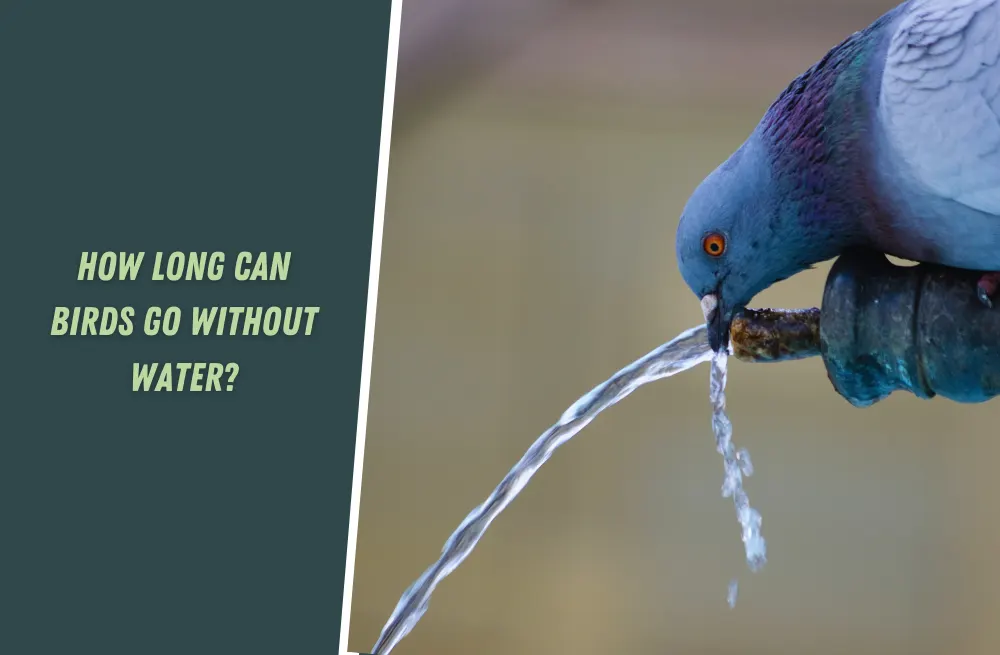Wombats primarily feed on vegetation, adopting a herbivorous diet. Their food choices consist mainly of grasses, roots, bark, and leaves.
The specific plant species consumed by wombats can vary depending on their geographical location and the seasonal availability of food. In general, wombats are known to graze on a variety of grasses, including native grasses and sedges.
They also have a penchant for feeding on the roots and bark of shrubs and trees, such as eucalyptus, acacia, and casuarina. Wombats use their strong, chisel-like incisors and powerful jaws to gnaw through tough vegetation and extract nutrients from their plant-based meals.
Their specialized digestive system enables them to efficiently process fibrous plant material, extracting the maximum nutritional value from their diet.
Let’s explore what wombats eat and how their diet contributes to their survival and well-being.
What Do Wombats Eat?
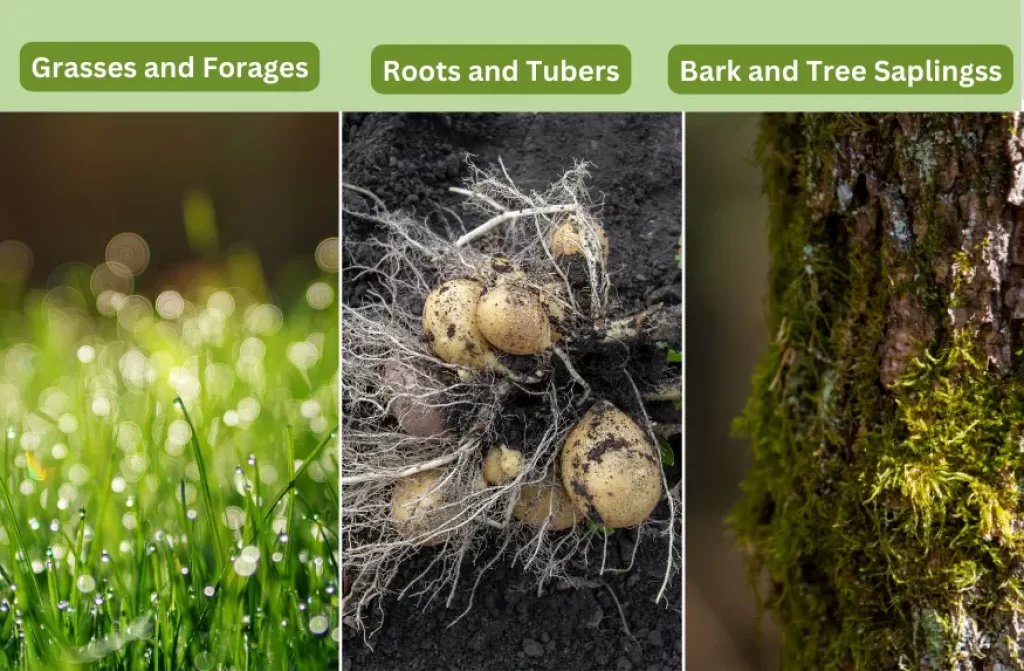
Grasses and Forage
The primary component of a wombat’s diet consists of grasses and forage. These include various species of native grasses, sedges, and herbaceous plants that are abundant in their natural habitats. Wombats have strong incisor teeth and powerful jaws that allow them to efficiently graze on these vegetation types, cropping grass close to the ground.
Roots and Tubers
In addition to grasses, wombats also consume roots and tubers. They use their strong claws and muscular forelimbs to dig burrows and access underground food sources.
Wombats feed on the fibrous roots and succulent tubers of plants, such as shrubs and trees, that grow underground. This adaptation enables them to obtain essential nutrients and moisture from the soil.
Bark and Tree Saplings
Wombats have a unique adaptation known as dental formula rotation. Their teeth continuously grow throughout their lives, allowing them to gnaw on tough materials like bark and tree saplings.
This behavior helps them maintain their teeth’s health and shape while also providing additional food sources, especially during periods when grasses and forage are scarce.
Coprolysis
A fascinating aspect of a wombat’s diet is their ability to perform coprolysis, which is the fermentation of their food within the digestive system. The wombat’s digestive system is specialized to break down tough plant material by hosting specialized bacteria and fermentation processes.
This allows them to extract maximum nutrition from their food, even from the cellulose-rich grasses they consume.
Water Intake
Although wombats obtain a significant portion of their hydration from the moisture present in their diet, they still require additional water intake. They can satisfy their water needs by accessing natural water sources such as streams, ponds, or even the dew collected on plants during the early morning.
Overall, wombats have a specialized herbivorous diet that consists of grasses, forage, roots, tubers, bark, and tree saplings. This diverse range of food sources allows them to adapt to different environmental conditions and ensures their survival in their natural habitats. By consuming a variety of plant material and utilizing their unique digestive system, wombats are well-equipped to thrive in the Australian landscape.
Do wombats have a preference for specific grass species?
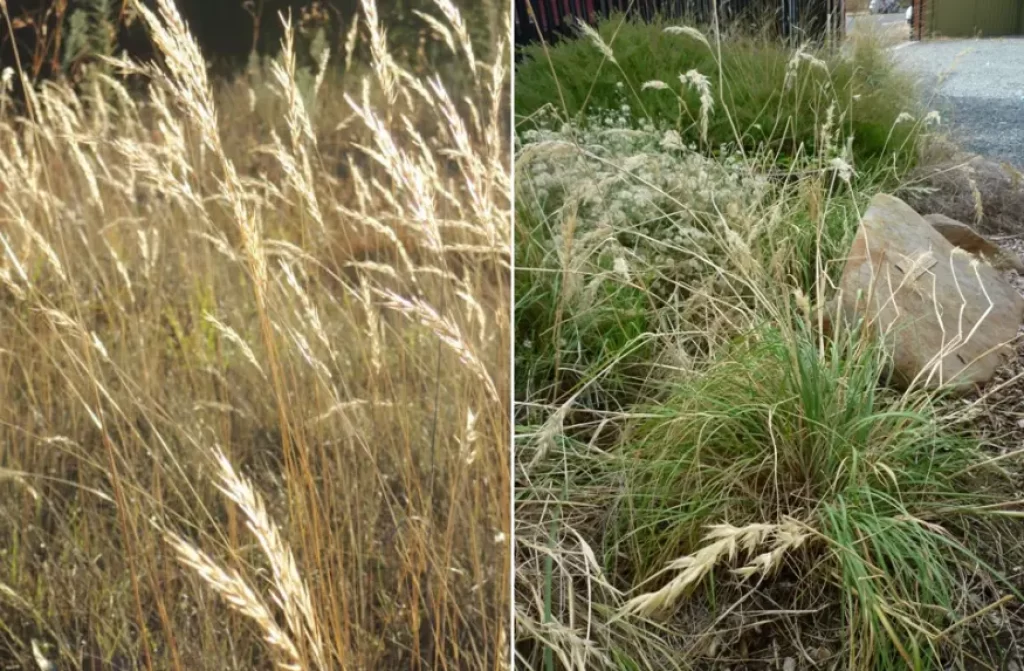
Yes, wombats do have a preference for specific grass species. They primarily feed on native grasses, with a preference for species such as kangaroo grass (Themeda triandra), wallaby grass (Austrodanthonia spp.), and spear grass (Austrostipa spp.).
These grasses are commonly found in the natural habitats of wombats and provide them with important nutrients and fiber. However, it’s worth noting that the specific grass species consumed by wombats can vary depending on their geographical location and the availability of different grass species in their habitat.
Which part of plants do wombats feed on when consuming roots and tubers?
When consuming roots and tubers, wombats primarily feed on the underground parts of plants. They use their strong teeth and powerful jaws to dig into the soil and extract the roots and tubers. These underground plant parts provide a source of nutrition and energy for wombats, contributing to their overall diet and survival.
What Do Wombats look Like?
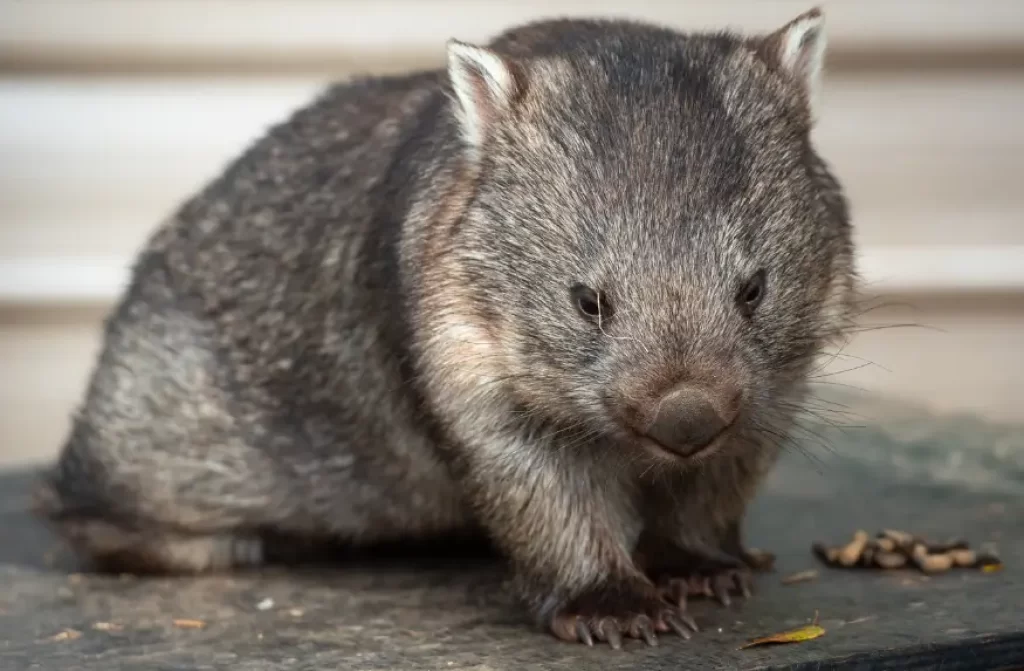
Wombats have a distinct and unique appearance. They are medium-sized marsupials with a stocky and muscular build. Their bodies are low to the ground and supported by short, strong legs. Wombats have a barrel-shaped body, broad head, and short neck.
They are covered in thick and coarse fur, which can vary in color from sandy brown to gray or black. Wombats have small ears and eyes, and their noses are located towards the front of their face. Overall, they have a charming and adorable appearance that adds to their appeal.
What Animals Do Wombats Compete With?
Wombats compete with other herbivorous animals that share their habitat and have similar dietary preferences.
These include kangaroos, wallabies, rabbits, and grazing livestock. Kangaroos and wallabies are herbivores that graze on grasses and vegetation, potentially competing with wombats for food resources.
Rabbits, known for their ability to rapidly reproduce, can also compete with wombats for food and resources, as they consume similar plant materials.
In areas where wombats coexist with grazing livestock, such as cattle or sheep, competition for grazing lands and vegetation may occur. However, wombats have specialized adaptations that allow them to access underground food sources like roots and tubers, giving them an advantage in finding food that may be less accessible to other competing animals.
What do wombats eat in captivity?
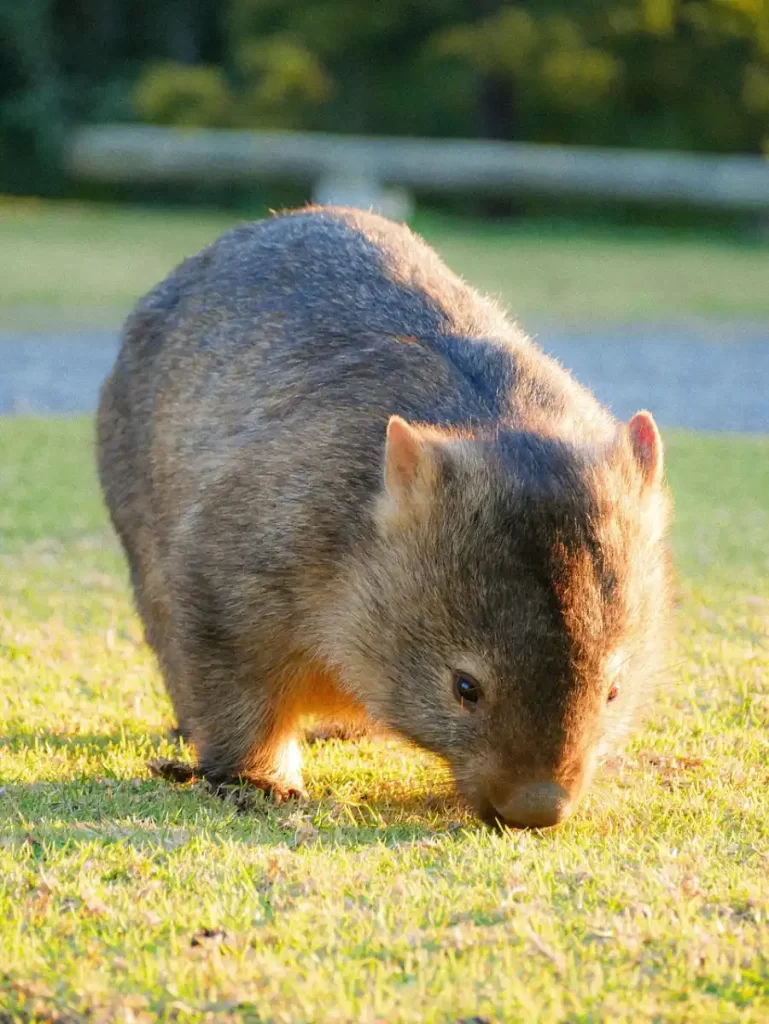
In captivity, wombats are typically provided with a diet that closely resembles their natural feeding habits in the wild. The specific diet may vary depending on the facility and the availability of food resources.
Captively-raised wombats are typically fed a combination of hay, grasses, fresh browse (leaves, branches, and twigs), and specialized pellet or grain mixes designed for herbivorous animals.
These pellet or grain mixes often contain a balance of essential nutrients and minerals to support the wombat’s overall health. Fresh water is also provided for hydration.
The types of plants included in the diet may vary, but common choices include native grasses, lucerne, clover, and various leafy greens. In some cases, supplementary foods such as carrots, sweet potatoes, and apples may be offered as treats or to provide additional enrichment.
Can wombats eat fruit?
Yes, wombats can eat fruit. While their diet primarily consists of vegetation such as grasses, leaves, and roots, wombats are known to consume fruits on occasion. In the wild, they may come across fruits that have fallen from trees or bushes and incorporate them into their diet.
However, it’s important to note that fruit is not a major component of their diet and is typically consumed infrequently compared to other plant materials. Wombats have a specialized digestive system adapted for processing fibrous vegetation, so their primary focus is on consuming grasses and plant matter that provide them with the necessary nutrients and fiber.
Can wombats eat meat?
No, wombats are herbivores and their diet consists mainly of plant matter. They are adapted to consuming grasses, leaves, roots, and other vegetation found in their natural habitats.
Wombats do not have the physiological characteristics or dietary requirements to digest and derive nutrition from meat.
Their teeth, digestive system, and overall anatomy are specialized for processing and extracting nutrients from plant-based foods. Thus, meat is not a part of their natural diet, and they do not possess the necessary adaptations to effectively consume or digest it.
Can wombats eat carrots?
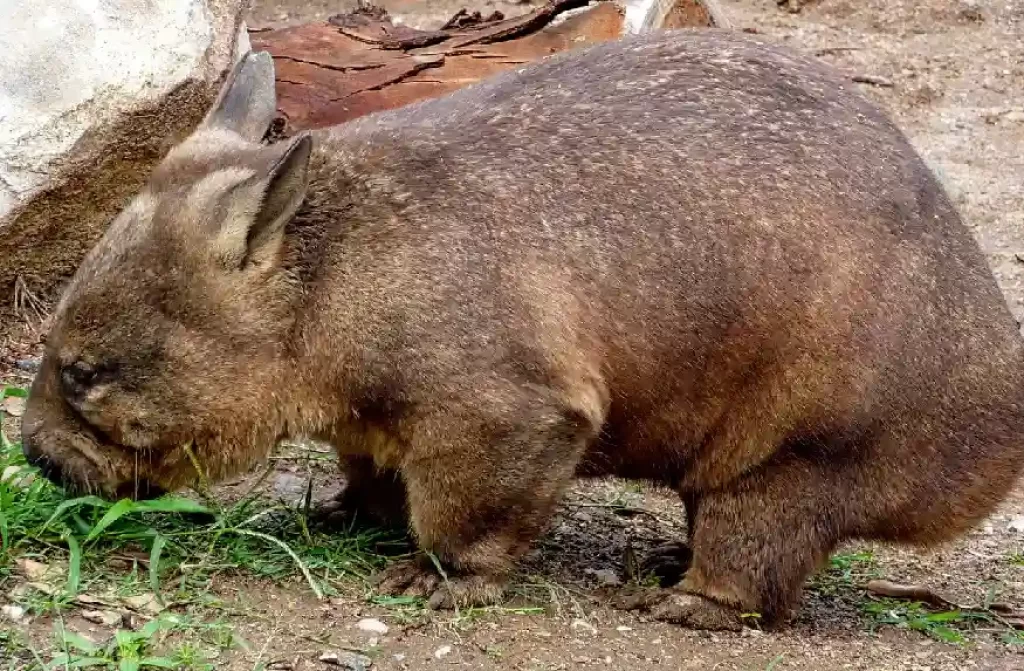
Yes, wombats can eat carrots. Carrots are a type of root vegetable and are generally safe for wombats to consume. Wombats have a diet that includes a variety of plant materials, and carrots can be a part of their overall diet.
However, it’s important to note that wombats have specific dietary needs and requirements, and their diet should primarily consist of grasses, leaves, roots, and other vegetation that closely resembles their natural diet in the wild.
Carrots can be offered as a occasional treat or supplement to their regular diet, but they should not be the sole or excessive part of their diet. It’s always best to consult with wildlife experts or veterinarians who have experience with wombats for proper dietary guidance.
Do wombats eat fish?
No, wombats do not eat fish. Wombats are herbivorous animals and their diet consists mainly of plant materials such as grasses, leaves, roots, and bark. They are not adapted to catch or consume fish or any other types of meat.
Wombats have specialized teeth and digestive systems that are designed for processing plant matter.
Their digestive system is not suited for digesting or obtaining nutrients from animal protein. Therefore, fish is not a natural or appropriate part of a wombat’s diet. It’s important to provide wombats with a diet that closely resembles their natural plant-based food sources to ensure their health and well-being.
Do wombats eat corn?
No, wombats do not typically eat corn. Their natural diet in the wild consists mainly of grasses, leaves, roots, and bark. While wombats may occasionally encounter corn in captivity or in human-populated areas, it is not a common or preferred food source for them.
Wombats are herbivorous animals with specialized digestive systems adapted for processing fibrous plant materials.
Their teeth and digestive processes are more suited to breaking down and extracting nutrients from coarse vegetation rather than grains like corn. It is important to provide wombats with a diet that closely resembles their natural food sources to support their overall health and nutritional needs.
Do wombats eat wood?
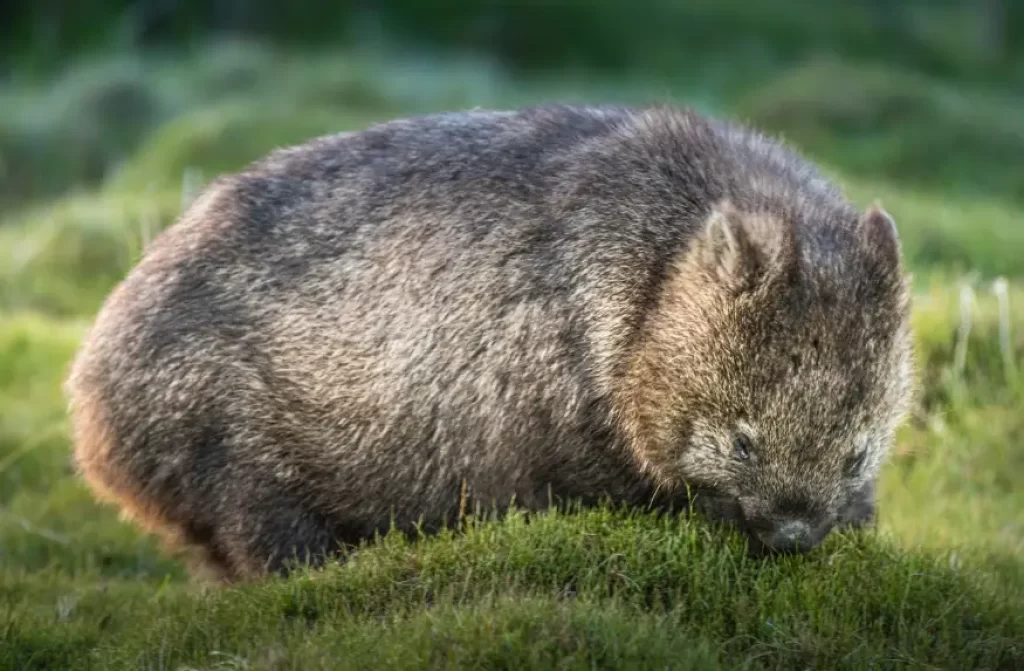
No, wombats do not eat wood. While they are herbivorous animals, their diet consists primarily of grasses, leaves, roots, and bark. Wood, being a hard and fibrous material, is not a suitable food source for wombats. Wombats have specialized teeth and digestive systems adapted for processing and extracting nutrients from plant materials such as grass and vegetation.
They are known to gnaw on tree trunks and bark to help maintain their continuously growing teeth, but they do not consume wood as a significant part of their diet.
Do wombats eat bugs?
No, wombats are primarily herbivorous animals and do not typically eat bugs as a significant part of their diet. Their diet mainly consists of grasses, roots, leaves, and bark. However, it’s worth noting that wombats may accidentally consume small insects or bugs that are present on the plants they eat.
These incidental insect consumption is not a primary food source for wombats, and they do not actively seek out or rely on insects as a significant part of their diet.






